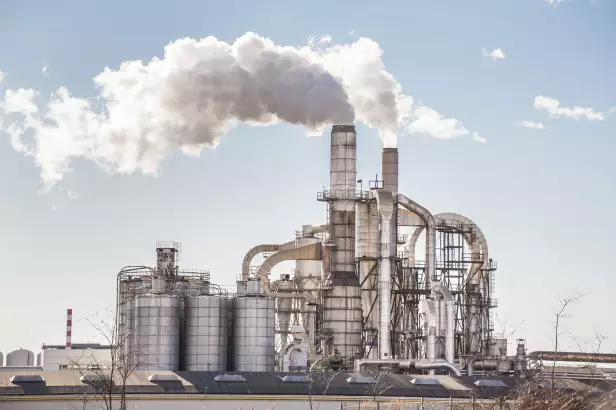How to Retrofit an RTO for Air Pollution Control?
介紹
Regenerative Thermal Oxidizers (RTOs) are widely used for air pollution control in various industries. They are highly efficient in reducing air pollutants such as volatile organic compounds (VOCs), hazardous air pollutants (HAPs), and other toxic gases. However, with the advancement of technology, it becomes necessary to upgrade the RTOs to make them more efficient and effective. Retrofitting an RTO is a cost-effective way to enhance its performance and extend its lifespan. In this article, we will discuss the various aspects of retrofitting an RTO for air pollution control.
Factors to Consider Before Retrofitting an RTO
Before retrofitting an RTO, several factors need to be considered, such as:
- The age of the RTO: If the RTO is too old, it may not be worth retrofitting and might need replacement.
- The type of pollutants: The RTO should be retrofitted according to the type of pollutants it needs to control.
- The size of the RTO: The size of the RTO also plays a vital role in determining whether it can be retrofitted or not.
- The budget: Retrofitting an RTO can be expensive, so it is essential to have a budget in mind before considering it.
Steps for Retrofitting an RTO
Retrofitting an RTO involves several steps:
Step 1: Evaluation of the Existing RTO
The first step in retrofitting an RTO is to evaluate the existing system thoroughly. It involves identifying the current problems, such as leaks, damages to the internal components, and wear and tear. Once the evaluation is complete, the necessary repairs can be made to restore the RTO’s functionality.
Step 2: Upgrading the Control System
Upgrading the control system is an essential step in retrofitting an RTO. It involves replacing the old control system with a new one that is more efficient and effective. The control system should be able to monitor and control the temperature, pressure, and flow rate of the RTO accurately.
Step 3: Upgrading the Heat Recovery System
The heat recovery system is a critical component of the RTO, which helps in reducing energy consumption. Upgrading the heat recovery system involves replacing the old ceramic heat exchangers with new ones, which are more efficient and durable.
Step 4: Upgrading the Insulation System
The insulation system helps in maintaining the temperature inside the RTO. Upgrading the insulation system involves replacing the old insulation material with a new one that has better insulation properties. It helps in reducing the heat loss, which in turn, reduces energy consumption.
Step 5: Upgrading the Burners
Upgrading the burners is another essential step in retrofitting an RTO. The old burners should be replaced with new ones that are more efficient and able to burn the pollutants completely.
結論
In conclusion, retrofitting an RTO is an excellent way to enhance its performance and extend its lifespan. However, it is essential to consider several factors before retrofitting an RTO, such as the age of the RTO, the type of pollutants it needs to control, the size of the RTO, and the budget. Retrofitting an RTO involves several steps, such as evaluating the existing system, upgrading the control system, upgrading the heat recovery system, upgrading the insulation system, and upgrading the burners. By following these steps, the RTO can operate more efficiently and effectively, reducing air pollutants and contributing to a cleaner environment.


公司簡介
We are a high-tech manufacturing enterprise specializing in comprehensive treatment of volatile organic compounds (VOCs) exhaust gas and carbon reduction and energy-saving technology. Our core technologies include thermal energy, combustion, sealing, and self-control. We have the capabilities for temperature field simulation, air flow field simulation modeling, ceramic heat storage material performance, molecular sieve adsorbent material selection, and VOCs high-temperature incineration and oxidation experimental testing.
團隊優勢
We have an RTO technology research and development center and waste gas carbon reduction engineering technology center in Xi’an, as well as a 30,000 square meter production base in Yangling. We are a leading manufacturer in terms of global sales of RTO equipment and molecular sieve rotary wheel equipment. Our core technical team comes from the Aerospace Liquid Rocket Engine Research Institute. We currently have more than 360 employees, including over 60 R&D technology backbones, including 3 senior engineers with researcher level, 6 senior engineers, and 47 doctors in thermodynamics.
核心產品
Our core products are the rotary valve regenerative thermal oxidizer (RTO) and molecular sieve adsorption concentration rotary wheel. With our own expertise in environmental protection and thermal energy system engineering, we can provide customers with comprehensive solutions for industrial waste gas treatment and carbon reduction with heat energy utilization under various operating conditions.

認證、專利和榮譽
- 智慧財產權管理系統認證
- 品質管理系統認證
- 環境管理系統認證
- 建築業企業資質
- 高新技術企業
- 旋轉閥蓄熱式熱氧化器專利
- Patent for Rotary Heat Storage Incineration Equipment
- 盤式分子篩轉輪專利

選擇合適的 RTO 設備
When selecting suitable RTO equipment, it is important to:
- 確定廢氣特性
- 了解當地法規和排放標準
- 評估能源效率
- 考慮維
- 進行預算和成本分析
- 選擇適當的 RTO 類型
- Take environmental and safety considerations into account
- Perform performance testing and validation
RTO Air Pollution Control Service Process
Our RTO air pollution control service process involves:
- Preliminary consultation, on-site investigation, and needs analysis
- Solution design, simulation, and proposal review
- 客製化生產、品質控制和工廠測試
- 現場安裝、調試、培訓服務
- 定期維護、技術支援、備件供應
We pride ourselves on being a one-stop solution for RTO air pollution control, with a professional team that tailors RTO solutions to meet the specific needs of our clients.
作者:米婭
